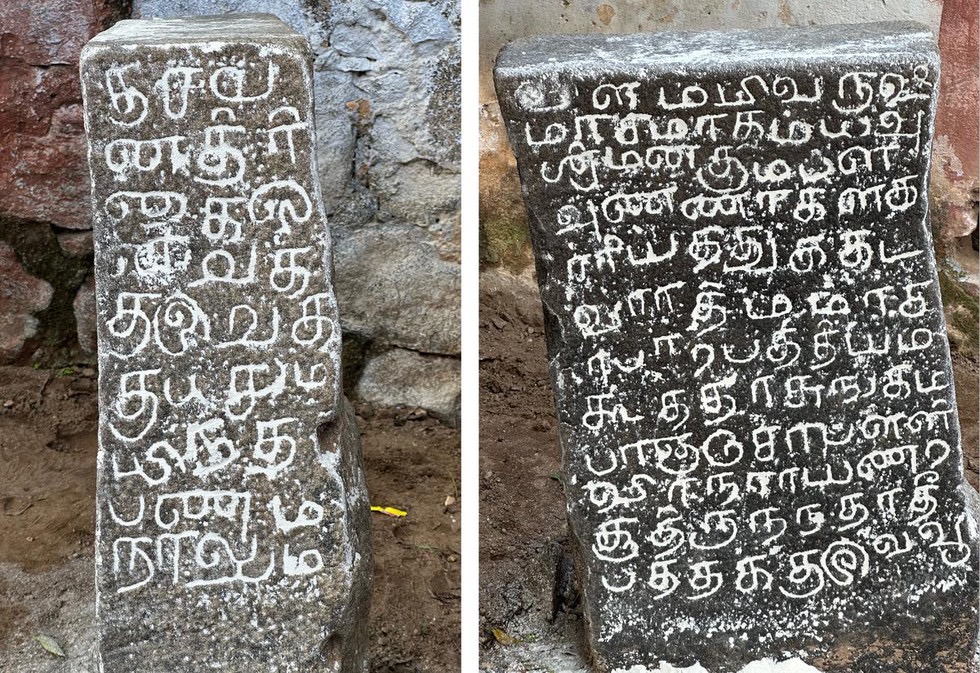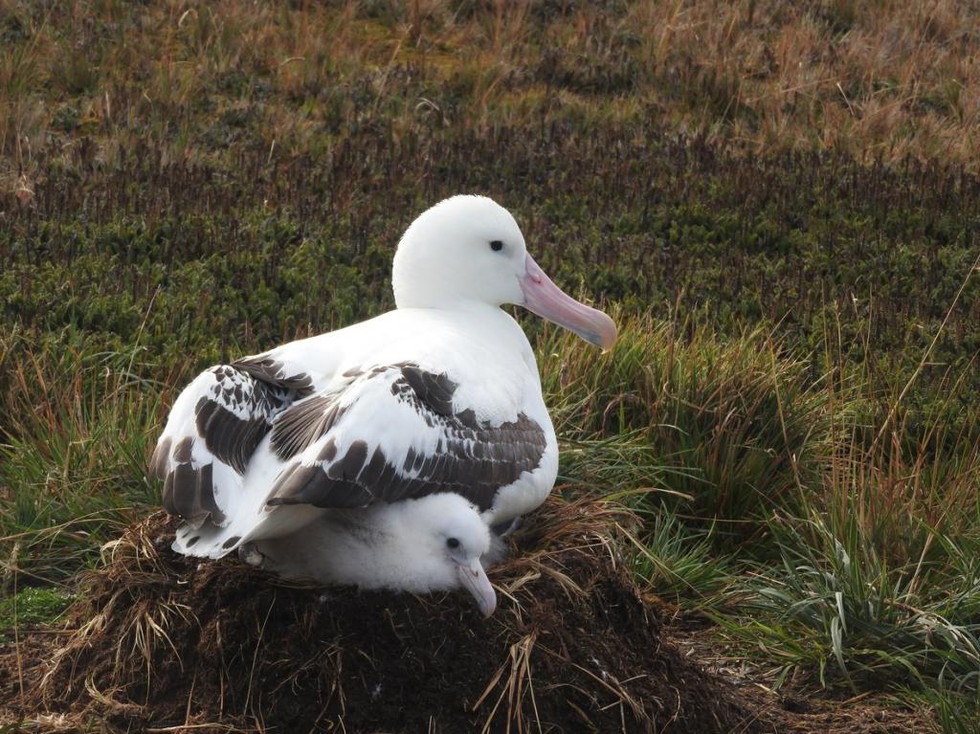CONTENTS
- Approval of Sweden’s NATO Membership by Turkey’s Parliament
- Leprosy
- Grantham Inscriptions
- Halwa Ceremony
- Mpemba Effect
- Disease X
- Wandering Albatrosses
Approval of Sweden’s NATO Membership by Turkey’s Parliament
Context:
Sweden’s attempt to join NATO cleared a major hurdle after Turkey’s parliament supported its membership.
Relevance:
GS II: International Relations
Dimensions of the Article:
- Why Sweden Wants to Join NATO?
- Turkey’s Opposition to Sweden’s Bid
- What Sweden Brings to NATO?
- What is NATO?
Why Sweden Wants to Join NATO?
- Centuries of Neutrality: Sweden maintained neutrality for two centuries, avoiding wars, including the World Wars and the Cold War.
- EU Membership: While joining the European Union and collaborating with NATO, Sweden initially avoided NATO membership.
- Shift in Neutrality: Russia’s invasion of Ukraine compelled Sweden to reconsider its neutrality stance, leading to a 2022 NATO membership application.
- Public Opinion: Growing public support in favor of NATO membership prompted the application by both Sweden and Finland.
Turkey’s Opposition to Sweden’s Bid:
- Alleged Soft Stance on Terrorism: Turkey accused Sweden of being lenient towards groups it considers terrorists, especially the Kurdish militant outfit.
- Freedom of Speech Dispute: Sweden’s protection of Quran-burning protests under freedom of speech laws strained relations with Turkey.
- Connection to Fighter Jet Deal: Some experts linked Turkey’s opposition to Sweden’s NATO bid with the US agreeing to sell 40 F-16 fighter jets to Ankara.
What Sweden Brings to NATO?
- Expanded NATO Territory: Sweden’s NATO membership would extend NATO’s presence along most of the Baltic Sea coastline, strategically significant in the proximity to Russia.
- Strategic Bases: The inclusion of Sweden in NATO would provide the alliance with strategic bases close to Russia, enhancing supply lines and defense capabilities.
- Modern Military Assets: Despite a small numerical size, Sweden’s modern and experienced military, along with advanced aircraft and submarine capabilities, would contribute significantly to NATO missions.
What is NATO?
- The North Atlantic Treaty Organisation, or NATO, is a political and military alliance of 28 European countries and two countries in North America (United States and Canada).
- It was set up in 1949 by the US, Canada, and several western European nations to ensure their collective security against the Soviet Union.
- It was the US’s first peacetime military alliance outside the western hemisphere.
- Thirty countries are currently members of NATO, which is headquartered in Brussels, Belgium.
- The headquarters of the Allied Command Operations is near Mons, also in Belgium.
What is important about NATO’s collective defence?
- Members of NATO are committed to mutual defence in response to an attack by any external party.
- Collective defence lies at the very heart of NATO, “a unique and enduring principle that binds its members together, committing them to protect each other and setting a spirit of solidarity within the Alliance”.
- This is laid out in Article 5 of the North Atlantic Treaty, the founding treaty of NATO.
Article 5 reads: “The Parties agree that an armed attack against one or more of them in Europe or North America shall be considered an attack against them all and consequently they agree that, if such an armed attack occurs, each of them, in exercise of the right of individual or collective self-defence recognized by Article 51 of the Charter of the United Nations, will assist the Party or Parties so attacked by taking forthwith, individually and in concert with the other Parties, such action as it deems necessary, including the use of armed force, to restore and maintain the security of the North Atlantic area.”
India’s Engagement with NATO
- India has been in contact with NATO at multiple levels since August 2022.
- The first political dialogue between India and NATO occurred in Brussels on December 12, 2019.
- A second round of dialogue was scheduled for 2020 in New Delhi but was postponed due to the COVID-19 pandemic.
- These interactions are part of India’s efforts to engage with different stakeholders on matters of mutual interest.
-Source: Indian Express
Leprosy
Context:
The Central government has approved a new treatment regimen for leprosy, aiming to stop its transmission at the sub-national level by 2027, three years ahead of the UN’s Sustainable Development Goals.
Relevance:
GS II: Health
Dimensions of the Article:
- National Leprosy Eradication Programme (NLEP): Advancing Towards Zero Transmission
- What is Leprosy?
- Leprosy Prevalence Worldwide and in India: A Persistent Challenge
National Leprosy Eradication Programme (NLEP): Advancing Towards Zero Transmission
NLEP Objectives:
- A centrally sponsored scheme falling under the National Health Mission (NHM), NLEP targets a significant reduction in the Prevalence Rate of leprosy.
- Objectives include achieving a Prevalence Rate of less than 1/10,000 population at the district level, reducing Grade II Disability rate to zero, and eliminating Grade II Disability among new cases and child leprosy cases.
- Generating awareness about leprosy disease is also a key focus.
Major Initiatives:
- Leprosy Case Detections Campaign (LCDC) in high endemic districts.
- Focused Leprosy Campaign (FLC) in low endemic districts for case detection.
- Special plans for Hard-to-Reach areas to ensure early case detection and treatment.
- ASHA Based Surveillance for Leprosy Suspects (ABSULS).
- Sparsh Leprosy Awareness Campaign on January 30th every year.
- Active Case Detection and Surveillance in both rural and urban areas.
Recent Developments:
- The Directorate General of Health Services (DGHS) has affirmed that NLEP is actively working to halt leprosy transmission.
- The government’s approval of a new treatment regimen aims to achieve zero transmission at the sub-national level by 2027, aligning with the UN’s Sustainable Development Goals.
- The Ministry of Health and Family Welfare plans to introduce a three-drug regimen for Pauci-Bacillary cases, replacing the current two-drug regimen for six months.
- The World Health Organization (WHO) is set to supply the revised drug regimen from April 1, 2025, prompting states and union territories to submit drug requisitions 12 months in advance.
What is Leprosy?
- Leprosy is a chronic, progressive bacterial infection caused by the bacterium Mycobacterium leprae.
- It primarily affects the nerves of the extremities, the skin, the lining of the nose, and the upper respiratory tract.
- Leprosy is also known as Hansen’s disease.
- Hansen’s disease produces skin ulcers, nerve damage, and muscle weakness. If it isn’t treated, it can cause severe disfigurement and significant disability.
- Hansen’s disease is one of the oldest diseases in recorded history. The first known written reference to Hansen’s disease is from around 600 B.C.
- Hansen’s disease is common in many countries, especially those with tropical or subtropical climates.
- It’s not very common in the United States.
- The Centers for Disease Control and Prevention (CDC)Trusted Source reports that only 150 to 250 new cases are diagnosed in the United States each year.
What are the symptoms?
- The main symptoms of Hansen’s disease include:
- muscle weakness
- numbness in the hands, arms, feet, and legs
- skin lesions
- The skin lesions result in decreased sensation to touch, temperature, or pain.
- They don’t heal, even after several weeks.
- They’re lighter than your normal skin tone or they may be reddened from inflammation.
How does it spread?
- The bacterium Mycobacterium leprae causes Hansen’s disease.
- It’s thought that Hansen’s disease spreads through contact with the mucosal secretions of a person with the infection. This usually occurs when a person with Hansen’s disease sneezes or coughs.
- The disease isn’t highly contagious.
- However, close, repeated contact with an untreated person for a longer period of time can lead to contracting Hansen’s disease.
- The bacterium responsible for Hansen’s disease multiplies very slowly. The disease has an average incubation period (the time between infection and the appearance of the first symptoms) of five years, according to the World Health Organization (WHO).
Leprosy Prevalence Worldwide and in India: A Persistent Challenge
Global Overview:
- Leprosy, tracing back to 600 B.C., remains one of the oldest documented diseases in history.
- As a Neglected Tropical Disease (NTD), leprosy persists in more than 120 countries, contributing to a significant global health burden.
- NTDs, encompassing various conditions caused by diverse pathogens, result in severe health, social, and economic consequences.
- In 2022, a total of 182 countries reported a registered prevalence of 1,65,459 existing cases and 1,74,087 new cases of leprosy.
Leprosy in India:
- Despite India achieving the status of “Leprosy Eliminated” in 2005, it continues to bear the brunt, accounting for over half (52%) of the world’s new leprosy cases.
- Several states, including Arunachal Pradesh, West Bengal, Bihar, Jharkhand, Odisha, Chhattisgarh, Maharashtra, Uttar Pradesh, Delhi, Madhya Pradesh, Gujarat, Dadra Nagar Haveli, and Daman Diu, have one or more districts (totaling 82 districts) that are yet to achieve the leprosy elimination target, highlighting the persistent challenges in combating the disease.
-Source: The Hindu
Grantham Inscriptions
Context:
A team of archaeologists recently discovered two stone inscriptions of ‘Grantham’ and Tamil dating 11th and 16th centuries respectively at Pazhnchervazhi village near Kangayam.

Relevance:
GS I: History
Dimensions of the Article:
- Grantha Inscriptions: Preserving Historical Scripts in South India
- Periods of Grantha Inscriptions
- Post-Independence Influence
Grantha Inscriptions: Preserving Historical Scripts in South India
Overview:
- Grantha, a historical script, was once widely used for writing Sanskrit in South East Asia and greater Tamil Nadu.
- The term “Grantha” in Sanskrit signifies a literary work, reflecting its association with writing Sanskrit works.
- Initially prevalent throughout South India, it played a crucial role in the development of the Malayalam language, where it was known as Arya Ezhuthu.
Evolution and Similarity:
- Both Grantha and Tamil scripts, derived from Brahmi, share similarities in their modern forms.
- The evolution of Grantha in Tamil Nadu can be categorized into four periods: archaic and ornamental, transitional, medieval, and modern.
Periods of Grantha Inscriptions:
- Archaic and Ornamental (Pallava Grantha): Notable examples include Mahendravarman’s Tiruchirapalli rock-cut cave, Narasimhan’s Mamallapuram, and Mutharaiyar’s Senthalai inscriptions.
- Transitional (650 CE – 950 CE): Associated with later Pallavas (Nandivarman’s Kasakudi, Udayendram plates) and Pandyan Nedunjadaiyan’s Anaimalai inscriptions.
- Medieval (950 CE – 1250 CE): Imperial Chola inscriptions from Thanjavur exemplify this period.
- Modern (Later Pandyas to Vijayanagar): Continued until the early 20th century, popularized for transcribing Sanskrit books.
Post-Independence Influence:
- With the advent of printing machines, many Sanskrit books transcribed in Grantha script were printed.
- Post-independence, the rise of Hindi in Devanagari script led to the decline of Grantha script’s popularity in printing.
-Source: The Hindu
Halwa Ceremony
Context:
The Union Finance Minister participated in the ‘Halwa Ceremony’ recently, a tradition observed before the annual budget presentation.
Relevance:
Facts for Prelims
Halwa Ceremony: Commencing the Budget Printing Tradition
Annual Tradition:
- The Halwa Ceremony is an annual tradition held prior to the budget presentation, symbolizing the official commencement of printing various documents related to the budget.
Rituals and Significance:
- The centerpiece of the ceremony is the preparation of traditional sweet ‘halwa’ in a large kadhai, symbolizing the beginning of the budget-making process.
- Finance Minister’s involvement: The Finance Minister actively participates by stirring the kadhai and serving the sweet to officials, marking the official start.
Location and Setting:
- The ceremony occurs in the basement of the Finance Ministry’s North Block in Central Delhi, home to a specialized printing press.
Formal Send-Off:
- The serving of halwa serves as a formal ‘send-off’ for ministry officials and staff actively engaged in preparing the Union government’s annual financial statement.
Lock-In Period:
- Following the ceremony, top officials enter a designated ‘lock-in’ period, isolating themselves within the ministry premises.
- This isolation aims to maintain confidentiality, with officials cutting off from their families during this crucial phase.
Secrecy and Confidentiality:
- The officials are mandated to stay within the Finance Ministry until the Finance Minister presents the budget, ensuring utmost secrecy and confidentiality surrounding the final budget document.
-Source: The Hindu
Mpemba Effect
Context:
The Mpemba effect continues to captivate scientists with its complex interplay of physical mechanisms.

Relevance:
Facts for Prelims
Mpemba Effect: Hot Water’s Peculiar Freezing Quirk
Origin and Discovery:
- Named after Tanzanian student Erasto Mpemba who, in 1969, brought attention to this curious phenomenon that defies conventional expectations.
Counterintuitive Observation:
- The Mpemba effect defies intuition by asserting that hot water can freeze faster than cold water under similar conditions.
Historical Recognition:
- While Aristotle, Francis Bacon, and René Descartes had noted this effect centuries earlier, it gained scientific attention more recently due to Mpemba’s observations.
Diverse Experiments:
- Numerous experiments have been conducted to understand the causes, but a consensus conclusion remains elusive.
- Microbubbles Hypothesis: One proposed cause is microbubbles left suspended in boiled water, promoting convection and facilitating faster heat transfer during cooling.
- Evaporation Impact: Warmer water’s higher evaporation rate contributes to enhanced convection and accelerated heat transfer due to lower density.
- Frost as an Insulator: Presence of frost in cold water may act as an insulator, slowing heat loss.
- Compounds in Water: Consideration of compounds like calcium carbonate precipitating and dissolving, influencing the freezing point.
-Source: The Hindu
Disease X
Context:
Recently, the World Health Organisation (WHO) emphasised the urgent need for global preparedness against a potential new pandemic, referred to as ‘Disease X’.
Relevance:
Facts for Prelims
Disease X
Concept and Origin:
- Hypothetical Pathogen: Disease X is a term denoting a theoretical pathogen or potential threat capable of triggering a significant pandemic in the future.
- Diverse Nature: It may manifest as a novel agent, encompassing viruses, bacteria, or fungi, with no existing treatment or preventive measures.
WHO Recognition:
- Blueprint List: Coined by scientists and acknowledged by the World Health Organization (WHO), Disease X finds a place in the WHO’s updated Blueprint list of diseases since 2018.
- 25 Viral Families: It could potentially emerge from any of the 25 families of viruses known to cause diseases in humans.
Severity and Unknown Nature:
- Potential Lethality: Scientists speculate that Disease X might surpass the lethality of recent pandemics, with estimates suggesting it could be 20 times more deadly than the SARS-Covid virus.
Future Microbial Threat:
- Unknown but Looming Threat: Disease X embodies an ailment currently unidentified but poses a substantial microbial hazard to human health in prospective scenarios.
-Source: Down To Earth
Wandering Albatrosses
Context:
Wandering albatrosses are threatened with extinction and climate change could put their nesting sites at risk.

Relevance:
GS III: Environment and Ecology
Wandering Albatrosses:
Physical Marvel:
- Largest Flying Bird: Wandering albatrosses hold the title of the world’s largest flying bird, boasting an astounding wingspan that extends up to 3.5 meters.
Nomadic Seafarers:
- Oceanic Lifestyle: These avian giants live the majority of their impressive 60-year lifespan at sea, making only periodic visits to land for breeding purposes.
- Southern Hemisphere Dwellers: Found predominantly in the Southern Hemisphere, wandering albatrosses are iconic inhabitants of the vast Southern Ocean, spanning from 60 degrees south latitude to the fringes of Antarctica.
Breeding Grounds:
- Island Sanctuaries: The birds choose remote subantarctic islands, such as Marion Island and Prince Edward Island, for breeding. These islands feature peat soils, tussock grass, sedges, mosses, and shrubs.
Conservation Significance:
- Population Centers: Approximately half of the global wandering albatross breeding population is concentrated on Marion Island and Prince Edward Island.
- Conservation Status: Recognized as “Vulnerable” by the International Union for Conservation of Nature (IUCN), these magnificent birds face threats that necessitate conservation efforts.
Threats and Conservation Needs:
- Human-Induced Dangers: Longline fishing poses a significant threat to wandering albatrosses, with these birds getting hooked and drowning. Additionally, ingestion of plastics, detrimental to both chicks and adults, is another pressing concern.
-Source: Down To Earth





